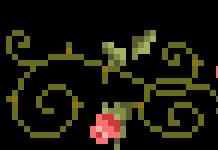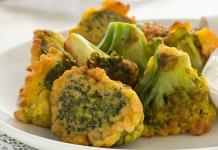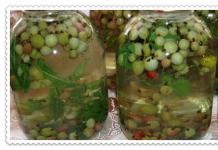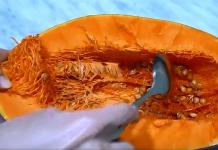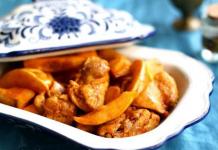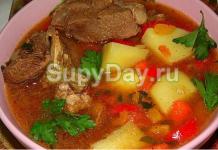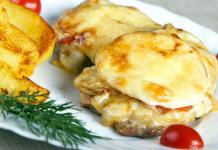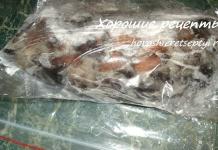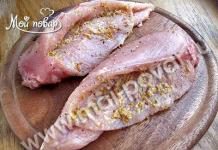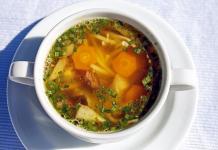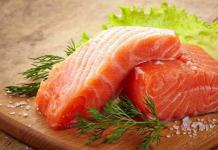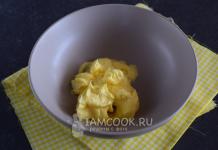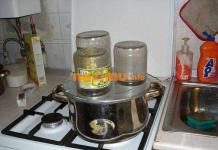Now this vegetable does not cost fabulous money and grows in almost every vegetable garden, and once it was considered sacred. Today we use it all year round and every day. And in terms of popularity, it is unlikely that anyone will outshine him. Guess what this is about? Of course, about the bow.
We grow from seeds and seedlings
Can onions be grown from seeds or seedlings? Nikolay Kupreeenko, Candidate of Agricultural Sciences, will tell about this.
“It is more economically profitable to grow onions from seeds: there is no need to grow sets and then store them; seeds can be sown both in early spring and before winter,” says Nikolai Petrovich. - The main thing is that they do not sprout in the fall. But, unfortunately, in recent years, winters are unstable and sowing seeds in winter is risky.
Onion seeds start growing already at plus two degrees. Therefore, it is better to sow them in the first decade of April. And so that the grains wake up faster, soak them for a day or two in water, remembering to stir occasionally. As soon as the seeds begin to hatch, send them to the refrigerator for hardening for 5-6 days. Then lightly (!) Dry and sow. If you don’t want to bother with all this, then just soak it for 12-24 hours in a solution of trace elements. Wet and germinated seeds sprout 6-7 days earlier than sown dry seeds.
To sow 1 sq. m of area, 0.4-0.6 g of seeds is enough. Make the grooves deep (2–2.5 cm), thus insuring the grain from drying out in early spring. The distance between the rows is 20 cm, between the plants is 2–4 cm. It will not be superfluous to mulch crops with a two-centimeter layer of humus or peat. Such a "blanket" will not only "warm" the soil, but also perfectly protect it from drying out and crusting. As a rule, the first shoots appear in 10-14 days.
The soil should be light, loose and fertile. Since the roots go shallowly, then the food for the vegetable will have to be obtained from the top layer of the earth.
Onions do not like high concentration of salts, so it is better to give fertilizers in several doses. And if you have not prepared the garden bed in the fall, then do not rush to add all the "mineral water" in one fell swoop in the spring. Better to spread it over three dressings.
Seed onion care is no different from seed planted onion. As soon as shoots appear, feed them with nitrogen fertilizers - 10-15 g / sq. m. When 1-2 true leaves are formed, the crops, if necessary, thin out and fertilize with nitrogen again (but not later than June 20). And better in liquid form. Or dilute the slurry 5–6 times with water by adding 20 g of "Superphosphate" to a bucket of solution.
Apply the third feeding when the bulb itself begins to form: 20 g of "Superphosphate" and 15 g of "Potassium Chloride" per bucket of water. During the summer, loosen the bed constantly (especially after watering) and weed.
For onion crops (both from seeds and sevka), foliar dressing with liquid soluble fertilizers can also be used - ZhKU, KAS, Vitokoktel, Ecolist, Basfoliar, Complimet and others.
Green onions can be obtained by sowing seeds in a greenhouse, small shelter, or under spunbond. Sowing at the beginning of April, the greens can already be cut in the middle of June.
If you rely on bulbs and want to get them truly gigantic, it is better to grow onions through seedlings. This method allows not only to increase the growing season by 1.5–2 months, but also to expand the number of some medium and even late-ripening salad varieties.
Onion seeds, sown in boxes or cassettes, germinate in 8-10 days, from here and calculate the timing of sowing seeds.
As a soil, it is best to use a mixture of turf and humus (1: 1). Pour the substrate in a layer of 12-15 cm. Be sure to soak the seeds and sow in rows every 5-6 cm to a depth of 1-1.5 cm. Then water the crops well, cover the box with cellophane or glass (to create a greenhouse effect) and place in a warm place , where the temperature is plus 18-22 degrees. As soon as shoots appear, remove the film and water the seedlings in 2-3 days. It is already possible to lower the temperature a little (up to plus 14-16). Slightly grown seedlings periodically feed with slurry (1:10), not forgetting to then immediately water with clean water.
A week before disembarkation, 40-50-day seedlings are hardened. The seedlings should already have 3-4 true leaves and a stem 0.6-0.7 cm thick. Seedlings are planted in the ground at the same time as the onion sets - the third decade of April - the first five-day period of May.
Dip the roots of the plants in a mash (clay + mullein) before planting. And make sure that the central part (growth point) is not covered with soil - otherwise the seedling will die. After planting, water the garden bed and mulch with humus or peat. When the seedlings are well accepted, carry out nitrogen-potassium dressing - 10 g of "Ammonium nitrate" and "Potassium chloride" per 1 sq. m. Further - the usual care.
Grief onion
The most dangerous enemy of the onion is the onion fly, or rather, its larvae. They damage not only onions, but also batun, garlic, leeks, and multi-tiered onions. They also do not disdain tulip and daffodil bulbs.
The insect hibernates in the soil at a depth of 10–20 cm. And it begins to fly as soon as cherries, bird cherry and dandelions bloom. The ash-gray onion fly is up to 1 cm long and is very similar to the housefly. The pest lays eggs in heaps of 5–20 eggs per onion, under the first dry scales or between leaves, as well as on the soil near the plants. After 3–8 days, larvae appear (whitish and legless, similar to worms). They bite into the bulbs more often from the bottom and feed on fleshy scales. The path to infections is open! The first sign of the presence of a pest is drooping yellow leaves on the onion. It has been proven that the onion fly is most harmful on sandy loam and loamy soils, but flies around peat bogs.
After three weeks, the larvae will go into the soil to pupate. And after 15–20 days a new (already second!) Generation of onion flies appears. If the year is very hot, then a third wave of the pest may appear.
Knowledge of agricultural technology helps to fight the onion fly. Our task is to prevent her from laying eggs. Therefore, watering can be used as a preventive measure. After all, a fly lays eggs only under dry lumps of earth.
The alternation of crops, as well as deep plowing of the land in the fall, will also help. After all, the insect hibernates in cocoons at a depth of 6–20 cm. Mulching the beds with peat is also effective. What else to do? Try to scare off with a smell. Rather, not even scare away, but knock the insect off the right course. You can pollinate the beds with tobacco dust or lime with ash (1: 1). Good results are obtained by processing with infusion or decoction of tobacco. Pour 400 g of crushed plant or tobacco dust with 10 liters of water and leave for two days. Then strain and add 40 g of grated laundry soap for stickiness.
You can try other deterrents, for example, "Creolin" (an antiseptic for wood processing). They need to soak sawdust or peat (1:20) and scatter them along the onion rows. The scent of "Creolin" will scare the fly away and it will not lay eggs under your plants. You can also use carbolic lime.
Twice a season, when the pest is most active (in late May - early June and early July), water the crops with a solution of sodium chloride: 1 glass per 10 liters of water.
Sowing onions next to carrots is also helpful. The phytoncides secreted by carrots scare off onion flies, and onion phytoncides are not liked by carrot pests. Here is such a mutually beneficial neighborhood. You can sow marigolds or calendula between the beds.
Chemicals must be used very, very carefully. And if you grow onions only for feathers, then no chemistry at all!
They often ask: why onion tips turn yellow ahead of time? There may be several reasons. First, there is a lack of nitrogen, which usually happens in the bright spring sun, when there is a powerful photosynthesis. Secondly, there is a deficit of copper: this most often happens in peatlands. With a lack of potassium, the leaves not only turn yellow, but also curl. If the plants come under severe frost, then not only the tips will turn yellow, but also the leaves as a whole.
If the ends of the leaves turn yellow and the stem brightens and even turns yellow, then, most likely, the plant is damaged by an onion fly. Although the same symptom can appear on too acidic soil or when the roots, due to lack of air, suffocate in waterlogged soil.
Take care of your feathers
As soon as the green feathers begin to lay down, stop all watering. To make the vegetable ripen better, free the bulbs, rake off part of the earth from the top. If the leaves of most of the onions bent and turn yellow, start harvesting. But do not be late, otherwise secondary roots will begin to form and the crop will be worse stored. Dig (and do not pull out) plants in sunny weather, protecting them from blows (where there is a blow, there is a wound). Then, if possible, leave it on the bed for another 3-7 days to dry. And take your time to trim the leaves. Do this in a month, when all the nutrients from the feather have transferred to the bulb. Or you may not cut it at all if you store it in braids. When the neck becomes thin and dry, send the onion for the winter, creating favorable conditions for it: the air temperature is from zero to plus 2 degrees, and the humidity is 75-80%.
by the way
Sharp onion varieties are much richer in sugars than sweet ones, and the inner scales of the onion are richer in sugars than the outer ones. Onions stimulate appetite and improve digestion, tone the body, have antiseptic, antimicrobial, anti-inflammatory, anti-sclerotic and antidiabetic effects. Onions help fight low blood pressure and contain flavonoids that prevent the formation of cancer cells.
Up ▲ - Reader Reviews (0) - Write a Review ▼ - Print version
Who among us does not know what a bow is? Most likely, there are no such strangers. And you don't need to be an experienced onion grower to grow this plant. White, purple, yellow - this is the most ancient vegetable culture on earth.
The homeland of onions is the mountainous regions of Central Asia. The inhabitants of India and Afghanistan were the first to learn to use it as a cultivated plant. Then he began his "victorious march" to other countries of the world.
There was such an old custom.
When a wedding cortege was moving along the street in the southern villages, a peasant with a huge wreath of onions - a symbol of the well-being of a young family - was at the head of it. A festive wreath was worn around the neck. Shiny bulbs sparkled in the sun, and "whispered" to each other in their special "onion" manner. Until now, wreaths, braids, bow braids are in use.
Genus onion (Allium L.) has in its asset from above six hundred species distributed all over the world. All types of onions have high taste.
About two hundred and fifty of them grow wild in Central Asia, Crimea, Altai and the Far East, Siberia, and the European part of the country. This culture is of great national economic importance. Onions are used as a food, vitamin, medicinal, ornamental, honey plant. With a huge number of different species, far fewer are cultivated. Of the onion plants that have gained a place in our garden and garden plots, seven types are most common: batun, allspice, leek, onion, slug, chives, and garlic.
Batun is a perennial plant that has hollow tubular leaves, like a bulb onion, but does not form the same bulb (in a batun, a small cylindrical bulb appears, turning into a false stem). The homeland of this type of onion is China. In another way, this plant can be called: onion, Tatar, winter, sandy. Leeks are a biennial herb. Refers to the number of food valuable vegetable crops. His homeland is the Mediterranean. In culture, leeks are widely distributed in Western Europe (France, Denmark, Holland). Onions are a biennial plant with a well-formed bulb. Not found in the wild. His homeland is Central Asia and Afghanistan. It is known in culture over four thousand years BC.
Useful properties of onions noticed by a man for a long time. Onion crops benefit everyone, especially their green leaves, which contain vitamin C and carotene. Fresh onion greens are a good antiscorbutic agent, it stimulates appetite, improves digestion. Chives of all types are useful for patients with acute respiratory illness or influenza, since it contains phytoncides that have a detrimental effect on pathogens. Leeks are recommended for metabolic disorders.
Poems about bow
Everyone is the envy of the bow today.
Wonderfully shaped and resilient,
Like a rebellious ball
Breaks out of the hands.
It is unusually round - I see
Golden, red, red.
But, peeling off the peel,
Stop your game.
The eye stings in earnest.
Decided to roar, as if?
Onions in the garden and in the garden,
Yes, with all honest people,
Develops, grows.
It will save us from diseases.
Yes, a good onion has grown.
Everything has happened. But not suddenly.
The labor was expended by me.
I followed the landing.
Large leeks have grown.
And now you are not in pain.
Add onions to the salad.
And put it on the table more boldly.
Unusual batun bow,
And Siberian onion slime.
Fragrant, bitter -
Are you crying? Who is to blame?
Why is onion called onion? This is due to the external similarity of its underground part with turnips. And the bulb itself is a thickening of the stem with buds of future bulbs and leaves.
The inner scales of onions can be white, greenish, or purple. It blooms in June-July, and the fruits ripen in August. Its seeds are black, wrinkled.
The homeland of the plant is Iran, Afghanistan and Central Asia, and in the European part it appeared thanks to the Romans.
White onion composition: vitamins and minerals
The characteristic smell of onions is due to the presence of essential oils with sulfur in it. In the spring, when vitamins are so lacking, be sure to include this product in your diet: it contains sucrose, protein, fructose, maltose, polysaccharide, and ash.
It is also rich in vitamins B, C, PP, provitamin A, contains potassium, calcium, magnesium, iron, phosphorus.
Calorie content of onions per 100 g of product is 41 kcal:
- Proteins - 1.4 g
- Fat - 0.0 g
- Carbohydrates - 10.4
- Water - 86 g
Useful properties of onions
Onions are an excellent remedy against microbes: onion phytoncides kill streptococci, diphtheria, dysentery, tuberculosis bacilli, and also have a beneficial effect on kidney function.
Due to its beneficial properties, an alcohol extract is prepared from it to stimulate cardiac activity.
Unlike sweet onions, spicy onions are much higher in sugars.
Add this plant to various dishes, because it not only improves appetite, but also has anti-inflammatory, antiseptic, anti-diabetic, bactericidal and anti-sclerotic effects on the body.
It is advisable to use onions for low blood pressure and cardiovascular diseases.
This powerful natural antibiotic is simply indispensable in the treatment of frequent colds and digestive problems.
Do onions help with colds? Of course! To do this, dilute a small amount of honey and onion juice, add a little water and use the mixture for instillation in the nose and for rinsing.
And for sore throat, make onion syrup: cut it into rings and place in a glass, sprinkle with sugar. Cover with a lid and drink in small portions when juice appears. The effect will not be long in coming!
Onion juice: lowers sugar levels, blood cholesterol, reduces the risk of atherosclerosis and prevents blood clots. Despite the unpleasant smell of onion juice, when applied externally, it has a positive effect on insect bites, purulent rashes, edema, lichen and rheumatic pains.
Harm and contraindications of onions
Almost all products can be harmful if abused. And this product is no exception - if you overeat it, digestion can be disturbed and stomach pains appear. This is due to the irritating effect of onions on the mucous membranes. Therefore - everything should be in moderation and with benefit!
Video about which is healthier - onions or garlic:
Briefly:
Onions are the only vegetable that is eaten daily. After all, you cannot imagine soup, borscht, salad and other dishes without onions. It has long been known about the healing properties of onions. "Garlic and onions from seven ailments," says a popular saying. A great variety of traditional medicine recipes contain onions, mostly onions, as an essential ingredient.
There are many types of onions. But consider the most popular of them - onions. This type of onion gets its name from the shape of its turnip-like onion.
Onions are the only vegetable that is eaten daily. After all, you cannot imagine soup, borscht, salad and other dishes without onions. It has long been known about the healing properties of onions. "Garlic and onions from seven ailments," says a popular saying. A great variety of traditional medicine recipes contain onions, mostly onions, as an essential ingredient.
One of its main features is the presence in the onion of a large amount of phytoncides - volatile substances that can have a detrimental effect on microbes, viruses and bacteria. Onions also have a vitamin and diuretic effect. Onions are known to contain more vitamin C than citrus fruits.
Leaves and bulbs are used for treatment. Here are just a few of the diseases that onions can help treat. These are: tonsillitis, atherosclerosis, bronchitis, worms, flu, constipation, cough, colds, arthritis, warts, toothache, hair loss, runny nose, burns, boils. In general, it is clear that onions are the first national vegetable and therefore any, even a minimal vegetable garden, should contain onion plantings.
There are many types of onions. But consider the most popular of them - onions. This type of onion gets its name from the shape of its turnip-like onion.
Onion
Onions are subdivided into sweet (salad), hot and semi-hot onions. There are a lot of onion varieties, but it is better to use local varieties. Most varieties of onions are spicy. Of the peninsula, the most widespread variety is the Oktyabrsky variety. Of the sweet (salad) varieties, Yalta is considered unsurpassed - a local variety of the Crimean folk selection, which can be grown well from seeds in southern latitudes.
Onions are grown in 3 ways: in a two-year culture with preliminary cultivation of seedlings, in an annual culture, when a marketable bulb is obtained from seeds in one year, and an annual culture from pre-grown 40-50-day seedlings.
Annual culture
It is mainly practiced for the cultivation of sweet and semi-sweet varieties and is possible only in areas with long summers. At the same time, it is possible to get onions from seeds in one year either by direct sowing of seeds into the ground or with preliminary cultivation of seedlings.
The first of these methods can only be used on well-fertilized, loose soils with artificial irrigation. The soil is carefully dug up in the fall, after rain or watering, clods are broken and leveled, thus completely preparing the site for spring sowing. In early spring, as soon as the snow melts and the soil is ripe, fresh seeds (nigella) are sown. It is advisable to pre-soak them and dry them to a loose state.
It is better to sow in rows every 15-20 cm, the seeding depth is 1-1.5 cm, their consumption is 8-10 g per 10 sq. M. To improve the conditions for seed germination, seedlings are mulched with a small layer of humus. The first thinning is done after the emergence of seedlings, leaving the shoots at a distance of 2-3 cm from each other, the second - after 20-25 days, leaving the plants 6-8 cm apart. After each thinning, it is good to feed the onion with a mullein diluted in 5-8 parts of water, or slurry diluted 2-3 times, or bird droppings diluted in 12-15 parts of water. In the presence of only mineral fertilizers, 30 g of superphosphate and 15 g of ammonium nitrate and potassium chloride are taken in a bucket of water. With the second feeding, if the plants are well developed, nitrogen (ammonium nitrate) can be omitted. In arid regions, 8-9 waterings are required with a rate of 300-400 liters per 10 sq. M. Watering should be stopped 20-25 days before harvesting. They start to it after the beginning of the lodging of the tops.
Seedlings
Sweet and semi-sweet varieties are also grown. It is prepared in greenhouses or in a room (in a box) and planted at the age of 50-60 days. To obtain seedlings, seeds are sown very densely (150-200 g per 10 sq. M) in grooves 1 cm deep with a distance of 4-6 cm between them. The mode of growing seedlings is usual - onions are unpretentious to the conditions. For better survival, before planting, the leaves and roots of the seedlings must be cut one third of the length. Planting seedlings in the ground should be early, close up finely. Further care is the same as for growing seeds.
Biennial culture
A two-year culture is practiced in the cultivation of sharp, lying onion varieties. Sevok (also called arbazheika, arpazhik, arpachik) makes it possible to grow onions without irrigation, at low labor costs. The sevok is obtained by sowing onion seeds (nigella) in grooves located after 5-7 cm, or sowing them in a wide, up to 10 cm, strip very densely, spending 80-90 g of seeds per 10 square meters. m. The bulbs are harvested when dried, lying leaves appear on the plants. Plants are pulled out, dried in the sun for 8-10 days, and then the roots and tops are crushed. Store in a dry ventilated room at temperatures from +18 to +20 C. Sevok, the bulbs of which are larger than 1-2 cm in diameter, are called sampling. When landing, it can form an arrow. Therefore, these bulbs are selected and used for growing feather onions in winter and spring. In the spring, the seedlings are planted as early as possible with a distance between the lines of 15-18 cm, and in a row of 4-6 cm. At the same time, make sure that the bulbs are located with their bottom down and are covered with a layer of soil no more than 1-1.5 cm. It should be noted that with a deep planting, a small bulb is formed. The difference in care compared to growing from seeds is less watering (5-6), removal of arrows, exclusion of thinning, provided that the seed is laid out manually at the same distance.
Onions are a healthy, tasty and popular vegetable that amazes with a variety of varieties: early and late, sweet and spicy, red and white, long-term and high-yielding. Even the smallest personal plot cannot do without it. To get an excellent harvest of this crop, you must first of all choose a variety with suitable qualities: taste, ripening period, stability, yield and storage duration with minimal losses.
Variety of varieties
Depending on the region and growing conditions, onion varieties are conventionally divided into two groups:
- For the northern regions. Such varieties are distinguished by a pronounced pungent taste and excellent keeping quality.
- For the southern regions. Such onions are not too spicy, but they will not be stored for long. Most often these are salad varieties.

White onions are also widespread. It differs from the usual one in a sweeter and more delicate taste. This is a salad look. Its disadvantage is a short shelf life and low instability to diseases and pests.
Depending on the ripening period, varieties are distinguished:
- Early. Vegetation period up to 100 days.
- Medium onions (100-120 days).
- Late. Ripen in more than 120 days.

The size of the bulbs is:
- small - up to 50 g;
- medium - 50-100 g;
- large - 100 g or more.
Early maturing varieties
Almost all early varieties of such onions are spicy. They have good keeping quality, long shelf life and are distinguished by a large amount of essential oils and sugar. Their disadvantage is low yield. Almost all early onion varieties are suitable for growing in all regions. But in the southern ones, they can be planted as an annual crop by sowing seeds for seedlings and get a rich harvest already in the same year. Consider the best early onion varieties, descriptions, reviews.
An early variety with amazing large fruits. the bulbs are beautiful, rounded, one-dimensional. The weight of 1 onion can reach 500 g. This type of onion is undemanding to the soil, but it needs organic feeding. Due to its sweet, mild flavor, it is grown mainly for salads. It can be grown by sowing seeds, getting a good harvest already this season.

This onion variety received the best reviews. Noted:
- large-fruited;
- consistently high yield;
- the taste is sweet and delicate;
- good keeping quality.
Carmen
This red onion variety is bred by Dutch breeders. You can start harvesting a mass crop approximately 80-85 days after planting the seedlings. The yield is quite high. Up to 1.5-2 kg of onions can be harvested from 1 m 2. Plant height up to 30 cm. Average weight - 70 g. The shape is round-flat, pulp density is average. The inside is purple. The taste is not very spicy, even slightly sweet with a pronounced fragrant aroma. Red onion contains a lot of nutrients. It is a rich source of vitamin C. It is considered to be an excellent remedy for boosting immunity, as well as for the prevention and treatment of many diseases. It is recommended for people with high cholesterol levels. Red onion prevents the appearance of malignant tumors, slows down the growth of cancer cells.
This variety of onion gained popularity due to its usefulness and excellent taste.
Red Semko F1
Dutch early hybrid. Ripening period is 3 months. Can be grown as an annual crop or from seedlings in areas with medium or short daylight hours. The Red onion variety, the description of which we are considering, is one- or two-bud, one-nested. The shape of the bulbs is round, weight - 80-100 g. The upper dry scales are purple, the flesh is white, rather dense, dark red stripes are clearly visible. The taste is semi-sharp. Productivity - 5-5.5 kg / m 2. Onions are suitable for long-term storage.

Reviews of the variety are mostly positive. The onion is early, the shape is quite beautiful, the shelf life is long, the yield is high, the taste is sweet.
Centurion
This hybrid is one of the best onion varieties. It was bred by Dutch breeders. Thanks to its excellent qualities, it has gained worldwide popularity and distribution.
Centurion is able to grow equally well in regions with cold and warm climates. The bulbs are neat, slightly elongated, dense in structure. The weight of one head can reach up to 100 g or more. The husk is bright straw. The pulp is white. It takes 90 days from planting to harvest. This variety is resistant to many diseases, does not release shooters. The taste is slightly spicy.

The Centurion is grown both for personal use and on an industrial scale. The shelf life without prejudice to the look and taste is up to 8 months.
Reviews of the variety are very good. The onion is productive, gives a lot of shoots, the shape is always good, the shelf life is long.
The variety was bred by German breeders. Today it enjoys considerable popularity among gardeners and summer residents. The culture is distinguished by its unpretentiousness to weather conditions, due to which it can be grown in different regions. This is an early maturing variety. Ripening period - 95-100 days. The bulbs are large enough, flattened, weight - about 130-150 g. The Stuttgarter Riesen onion variety is suitable for making healthy salads, canning, freezing. It has a juicy pulp that tastes good. The surface husk is milky, brown-yellow or yellow. Onions have white flesh, quite juicy, pleasantly spicy. Stuttgarter Riesen is resistant to downy mildew, so there is no need to process it with chemicals, which is important for amateur gardeners.

Summer residents love the variety for its high yield, good bulb size, excellent keeping quality and decent presentation.
Mid-season varieties
The growing period of such crops reaches 100-120 days. Through planting sevka, it is possible to grow in a wide variety of regions. Mid-season varieties are well stored, suitable for long-distance transportation. The crop can be canned, pickled and consumed fresh. Consider the most popular onion varieties, photos, descriptions.
Bessonovsky
One of the oldest varieties grown in Russia. The bulbs are small, flattened or round, weighing up to 60 g. The scales are tight-fitting, golden yellow. The taste is quite spicy. The shelf life is long - up to 9 months. Bessonovsky bow has a good presentation. The yield is average. From 1 m 2 of the garden, you can collect 1.5-2 kg of onions. The variety is not very resistant to diseases. May be subject to downy mildew and bottom rot. For the prevention of planting, it is recommended to spray with drugs against pathogens.

According to reviews, this is a budget variety that has good characteristics: good keeping quality, average yield and pungent taste.
Hercules
The Hercules onion variety is very popular among summer residents. It is distinguished by a fairly high yield (up to 7-8 kg from 1 m 2 are harvested), unpretentious care and long shelf life. With proper storage, onions rarely rot and do not lose their useful qualities throughout the entire period. The bulbs have a pleasant mild taste and aroma. which we are considering is pest resistant. It grows well both outdoors and in a greenhouse. Can be planted before winter.

The Hercules onion variety, the description of which we reviewed, received the best reviews. There was a good yield, undemanding conditions of maintenance and care, good adaptation to arid climate.
Sturon
A Dutch variety loved by many farmers and gardeners. The onion has received wide recognition due to its unpretentiousness and long-term storage. The technical maturity of the bulbs occurs in about 115 days. Can be grown in warm to temperate regions. Onion sets can be cultivated as one-year and two-year cultivation.
The bulbs are large, weighing up to 220 g. The shape is elongated, which is very convenient when cutting it. The upper husk is yellow-brown. The taste is moderately spicy. The Sturon onion variety, the description of which we are considering, is distinguished by excellent keeping quality: it is remarkably stored throughout the winter without losing its taste. Due to this characteristic, it is often grown commercially. The yield is average. On average, up to 29 tons of crops are harvested from 1 hectare of land. The variety is resistant to many diseases, which allows you to get a harvest without the use of chemicals. They are grown both in the open field and in greenhouses to obtain greenery.

The Sturon onion variety we reviewed received good reviews. He is not prone to shooting, tolerates frost well, disease-resistant, not picky about care, excellent keeping quality.
Chalcedony
The variety was developed by the Moldavian Institute of Vegetable Growing. The pulp is white, juicy enough. The shape of the bulbs is round or oval, the taste is pungent, but not pungent. Weight - up to 90 g. Chalcedony has gained popularity due to a fairly high yield: from 1 m 2 you can collect 5-7 kg of onions. The outer scales are bronze in color with a brown tint. A feature of the variety is that during growth, the bulbs are above the ground, which speeds up and facilitates their ripening and harvesting. Despite the fact that the bulbs are large enough, the yield largely depends on the fertility of the soil and climatic conditions. Chalcedony contains a large amount of vitamins, folic acid, carotene, essential oils. According to reviews, this vegetable has a beautiful appearance and excellent spicy taste. It is appreciated for long storage without loss of vitamins and taste.

Late varieties
The growing period for late varieties is 120 days on average. They are distinguished by a long shelf life, have excellent taste and have a universal purpose. Consider the best onion varieties.
Bamberger
New variety recommended for feather and turnip growing. Inside, the color of the onion is milky white, the top dry scales are yellow. The bulbs are small (70-80 g), elongated. The taste is soft, sweet, so onions are often used for making salads.
Among the reviews of gardeners, there are no descriptions of any shortcomings of this variety. Most often it is praised for its very pleasant taste, juiciness, crispy flesh, unpretentiousness, convenient shape, long shelf life, and resistance to fungal diseases.
Globo
Late-ripening variety for salad purposes. From planting seeds to harvesting - 165-170 days. Refers to the budget option. It is popular for its ability to grow bulbs from seeds. Recommended to grow through seedlings.
The bulbs are very large, weighing up to 600-700 g, the shape is broadly elliptical, the dry scales have a deep yellow color. The taste is quite sweet, the pulp is juicy, without a pungent onion smell. Can be grown in different regions of Russia. The variety is resistant to diseases. The yield is high.
Gardeners love the variety for its sweet juicy pulp and the absence of a pungent onion smell. It is ideal for salads and other dishes.
Red Baron
Red onions are famous for their exquisite taste and special benefits. They are high in antioxidants that help the human body fight infections, aging and cancer cells. The variety is suitable for growing in different climatic conditions. The pulp is red and juicy, bringing a certain zest to fresh vitamin salads. The bulbs are round, uniform in structure and high density, the scales are purple or red. The pulp is crispy, very pleasant to the taste, there is no bitterness. Red Baron is resistant to fusarium, oversporosis and root rot. The yield is high. The ripening period is 125 days. Productivity is stable, keeping quality is good.
Housewives love this onion very much and are often used in salads. When touched, the red color does not transfer to other components of the dish. According to reviews, Red Baron is well kept.
Exibition
The variety was bred by Dutch breeders. The growing period is long (80-85 days), therefore the seedling method is recommended. In many regions of Russia, it is this method that allows you to get high yields. The bulbs are distinguished by their large size. If the rules of agricultural technology are observed, a fairly large harvest (3 kg or even more) can be obtained from 1 m 2. Bulb weight - from 120 to 500 grams. In addition to good yields, this variety has excellent taste. The bulbs are sweet, without bitterness. But they cannot be stored for a long time, since they are intended for salad purposes.

The variety is popular due to its large size and good taste.
Winter varieties
There are so-called which are planted before winter. They are not subject to shooting, do not freeze over the winter. Sevok is planted in late autumn. This is done so that the feather does not start growing in warm weather.
Radar
This winter variety is easy to care for, resistant to adverse climatic conditions. The foliage is dark green, the bulbs are round with dense flesh. Weight reaches 300 g. The scales are golden yellow, dry and strong. The variety is resistant to diseases and pests, not prone to shooting, unpretentious in care. From planting to harvest - 250 days. It is not recommended to grow in one place for more than 2 years.
Radar is very popular among gardeners. He is loved for its resistance to adverse conditions, ease of care and great benefits.
Shakespeare
Early maturing Dutch winter variety (75 days from planting). The bulbs are distinguished by a clear rounded shape, the bottom is yellow, the top is light brown. Shakespeare is not subject to shooting. It has a dense, juicy pulp and a semi-sharp taste. The variety is resistant to most diseases. The bulbs are large (up to 100 g). The dense casing layer makes it possible to withstand rather low temperatures (-18 0 С) even without snow.
Leek
This is a biennial plant, although in the south of our country it can be grown as a perennial crop. The bulbs are long, silvery-white, oblong in shape, the taste is much softer and more aromatic than that of onions. There is a high content of vitamins, potassium. The variety has diuretic properties.
The plant starts rather slowly - the seeds begin to germinate in fragile small shoots. But after two months, the leek reaches royal sizes, atypical for bulbous plants - a height of 1-1.5 m, a food organ ("leg") weighing up to 400 g.
Flat, long leaves, similar to garlic, grow in a fan. The size of the white stem depends on the ripening period and the variety. In later varieties, the leg is short, but more massive, in the early species it is long and thin. Leeks have a long growing season: early-ripening varieties have 100-130 days, medium-sized ones - 140-160 days, and later ones - 190-200 days.

Leek varieties
Early maturing varieties. To get early production, summer or fast-growing varieties are planted. Their cleaning begins in August. A characteristic sign of early maturity is a thin stem, the light part of which reaches a length of up to 50 cm. Early production is used mainly for summer consumption and processing.
The best leek varieties:
- Columbus is a Dutch variety with excellent palatability. The adult plant is not tall (up to 80 cm), the leg is up to 20 cm, the diameter is up to 6 cm, and the weight is up to 400 g.
- Vesta is a variety of domestic selection. The beginning of ripening is 120-125 days after sowing. The adult culture is powerful, up to 1.5 m tall, the fan of leaves is light green. The taste is sweet.
- Elephant trunk is a variety that forms a false bleached stem up to 30 cm in length. Has good quality of the bleached part, pleasant sweetish taste. It remains in the sand for up to several months.
Mid-season varieties. Autumn leek varieties form a more powerful and thicker "leg", the length of which is about 40 cm. The leaves are also quite large, green with a waxy gray bloom. If you leave the plant in the ground and cover it well, after winter it will grow back and give seeds the next year. The shelf life of mid-season varieties is up to 2-2.5 months.
The best varieties:
- Casimir is a domestic highly productive variety with a dense, high-quality bleached "leg", the average length of which is up to 30 cm. It is a tall plant with green, almost vertical leaves. Casimir is quite picky about moisture and nutrition, it is advisable to grow seedlings.
- Winner - grown as an annual and as a perennial crop. It is a medium-sized plant with gray-green leaves with a bluish bloom. The length of the white part is 15-20 cm, the diameter is about 4 cm. The variety is highly frost-resistant, so it can be grown in cold regions.
Medium and late varieties. Insofar as the growing season of winter varieties is 180-200 days; they do not have time to ripen in the Urals, Siberia and other regions where the frost-free period is no more than 150 days. Such varieties have a short and thickened bleached part and are characterized by high cold resistance.
The best varieties include: Alligator, Karantansky, Bandit, Autumn giant.






